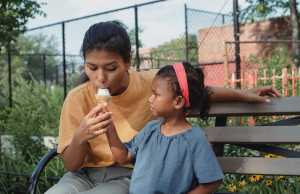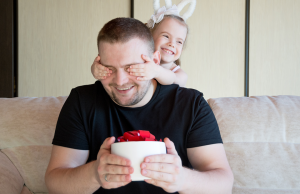Some of my favorite memories from grade school wouldn’t exist if it weren’t for P.E. class: tackling Holiday-themed obstacle courses, learning how to play my soon-to-be favorite sport (soccer), and crab-crawling across the floor in a fit of laughter alongside friends. I had a blast in gym class and looked forward to each school day because of it. However, that’s not to say it didn’t come with its challenges.
I loved to play the aforementioned games, but sometimes P.E. demanded more than I had to offer. A prime example is the rope climb: one day, my teachers introduced the challenge of climbing to the very top. But I just couldn’t do it, and it exhausted me both mentally and physically to try.
I appreciated the challenge, but at the same time, I despised my gym teachers for making me attempt the impossible. And as it turns out, stubborn little-me may have benefited from foregoing the activity. A new study from the University of Stirling says that kids should exercise at their own pace, instead of exhausting their energy, as the former improves their attention and memory. Researchers suggest P.E. teachers reevaluate the structure of their classes, amidst these findings.
This study is just a small part of the BBC Learning’s Terrific Scientific Campaign, which is meant to boost kids’ interest in science—but it did one further by yielding these significant results. Over 11,000 students in the UK helped the researchers reach these findings: they simply completed attention and memory tasks on the computer and participated in three different outdoor activities—a bleep test (the most intense of the three), a run/walk activity (of intermediate intensity), and a control activity (low-intensity activity) where they simply relaxed outside. The kids also answered questions, such as how happy and energized they felt, both before and after completing the activities.
The researchers observed the following from the reports: the participants felt more awake after taking a break and engaging in short-term exercise; they felt more awake after the bleep test and the run/walk test than after the control activity; and they felt best after completing the run/walk activity. Additionally, the kids completed the computerized attention tasks quicker after the run/walk activity, as compared to the other two outdoor activities; and they had greater control over their responses after completing the bleep test and the run/walk test than after the control.
Ultimately, the study, “concluded that exercising leads to improvements in children’s mood and cognition,” as explained by Dr. Colin Moran of the University of Stirling’s Faculty of Health Sciences and Sport. “In most tasks, participating in run/walk activity was more beneficial than doing the bleep test, where children should be closer to exhaustion. However, in most cases, doing the bleep test was no different from completing the control activity.”
Dr. Josie Booth of the University of Edinburgh’s Moray House School of Education breaks down how these findings should effect change: “This suggests that children should be encouraged to exercise at their own pace […] this may help children be more ready to learn when they return
to the classroom.” She goes on to say that this does not translate into discouraging kids from tackling more vigorous activities—but that an emphasis should be placed on exercising at a comfortable pace.
According to these findings, my P.E. teachers should have welcomed my desire to climb that intimidating rope… had I expressed one. I did not, however, want to tackle the challenge, as it just wasn’t within my abilities at the time. Instead, they should have encouraged my participation in an activity that fit within my comfort level—doing so would have boosted my ability to learn upon returning to the classroom.
Source:
University of Stirling (2017, December 19). Exercising at Own Pace Boosts a Child’s Ability to Learn. NeuroscienceNews. Retrieved December 19, 2017 from http://neurosciencenews.com/exercise-childrens-learning-8208/













